|
So today I’m looking at games that are inspirations for me as a developer. But these are special cases, not necessarily inspirations in the sense of having an emotional or mental significance for me (although often that too), but in the sense that my mind has filed them away as lets say “game designer toolbox” games: which is to say each of them represents a particular concept or set of concepts or mechanics that my subconscious bubbles up to me again and again when I’m designing games.
But “game designer toolbox” sounds very dry, so I’m calling them Pandora’s box games, since they also contain the tantalizing risk of over-scoping due to the scale or potential of their ideas. The Witness I suppose it’s not uncommon for designers have one or a few games that they catch themselves referencing a little too much. For me that’s The Witness. From the first screenshot I ever saw of it, years before it was released, I knew it was something special, even though I didn’t have a clue what the actual gameplay was at that point. My next clue was an early preview/interview video where Jon Blow played through the first 10mins or so with an interviewer and introduced a lot of the gameplay concepts. In that video he said something like “instead of players collecting items in the game, they explore it to collect concepts in their own mind”. A lofty ambition, but after playing the game who could really say it's not executed exceptionally well. While you could say that mastering many games out there is like learning a new language, The Witness is one of very few games where this is literally true – all around the game world are symbols whose meaning we learn (but being symbols whose meanings are rules rather than words, their “meanings” are paradoxically more abstract and more concrete than verbal meanings), and these symbols are connected to places, both as a strong game design memory-flag for the player (“remember this symbol that you learned in this area”), but also could be read as an allegory for how language evolves out of its surroundings. So what does this all mean to me? I guess the “players collecting concepts in their own mind” is something I love, and yet my own practice has naturally drawn me away from. Even from my very first game I tried to have minimal UI, no inventory, etc, but being true to myself that just didn’t suit the kind of games I needed to make. Nonetheless, I hold this principle of Jon Blow’s in high regard, even if it serves as a counterpoint to my own practice, that’s still an invaluable thing to have. Inside a Star Filled Sky (ISFS) Doesn’t that name in itself just take you on a journey? As soon as I heard it I knew this game was for me. It came out a year after the Inception, and I’d be curious to know whether its “worlds within worlds” design was inspired by that film. Whether it was or not, ISFS is clearly happy doing its own thing. Not only can you go inside worlds inside worlds, but you can go inside enemies, where their insides are a level and you can change their attributes by how you play that level, and you can go inside powerups and change their attributes, and all of this is infinitely recursive – so you can go inside a thing inside a thing inside a thing, to infinity! Now apart from that, what’s the game about? Yeah, well not much else unfortunately, you just use this brilliant recursive structure to shoot things and get to the highest level you can. So that’s not what is interesting to me. Beyond the recursive stuff, which I could explore forever as a game designer, if I had any idea how to make it, there is one shining jewel from this game that has set itself in my mind and stayed there for over 10 years now… …but it’s not easy to communicate. Maybe I can summarise it like this: I’m in a level, pinned down by an enemy that I clearly can’t get past in my current state, so I go inside the enemy to try to weaken it. While inside, I find a particular type of powerup that would fix my problem out there, but it’s not powerful enough, so I go inside it to power it up, there I have to play through a few stages to get it to the level of power I need. So then I return back up through those levels, out of the power up which I now collect, then out of the enemy which I can now get past. This has all taken say 10-15 minutes. But the jewel of my personal experience was, when I returned to the enemy-situation that had caused me to go on that tangent, I remembered why I had gone on that tangent. As in, only then did I remember. Up until then I was in another world, I had a different purpose. Hmm, I don’t know if this will make sense, but it was a powerful sensation. Imagine if you emerged from this life you’re living now, your whole life from birth to death, and it turns out it was just a small piece, a side mission, of a bigger life that contained many such lives. It was like a little flash of that. Enough said I think! So it happens from time to time when I’m working on something that, in my game design document I’ll reference the “Star Filled Sky Experience”. Gunpoint I’m tempted to just say nothing else except CROSSLINK: that’s the aspect of this game that I just love and think about often. Looking at something like hacking in the Watchdogs series, it’s easy to see how a similar concept can easily be diluted. But Gunpoint does it so perfectly, aided I’m sure by the fact that the game is so minimal, so there are few distractions in the way of getting this mechanic just right, and communicating it to players so clearly. Aside from its specific implementation in the game (ie interconnecting electrical devices) which in itself has a world of possibilities for a game designer to explore further, the concept of interdependent connections, and the resulting emergent problem solving this can offer players, could be applied to any other context you could imagine (magic systems, social systems, character behaviours, etc, etc), and has such huge untapped potential. Breath of the Wild (BotW) After Majora’s Mask I hadn’t played any Zelda games for a long time before BotW. For several reasons I basically stopped playing any game that had any kind of combat in it (I’m just over it, on so many levels). But when I saw the BotW team’s GDC talk, and specifically the stuff about what they called the “chemistry engine” I was absolutely sold on this game. In fact after simply watching that talk, and before I’d ever even played the game, I started designing a new game based on that chemistry engine principle. After a while this idea has just become second nature, so unlike say Star Filled Sky, I don’t often reference BotW in my game design docs, but that’s really the genius of the chemistry engine, it’s low hanging fruit, it’s so obvious and “real world” that once you have it in your game design toolkit you don’t really need to consciously think about it, it’s just there to use as you need it. For me the second piece of the puzzle of this becoming second nature was my experience with Mario Maker 2. Mario Maker 2 This is just a short one because, through my game designer’s lens Mario Maker is less a game than a fun game design tool. In a nutshell, my revelation moment was seeing each component of the Mario games – keys, springboards, timer-switches, pipes that spawn objects, etc, etc – and seeing them presented in this clear and simple UI. It was like half the work was done for me already, so I started prototyping a lot of this functionality, not for a specific game, but just as a foundation of components that I could use for any game I was working on. Then not long into this process, the chemistry engine stuff started to get included. I ended up leaving this prototype behind, but on a later game project, without even thinking about it, I started to implement this way of thinking (which could be called an entity component system, but I think that term is way too broad to really mean much) and eventually fully realised this robust system of modular behaviours including those Mario Maker and chemistry engine inspired aspects, and much more beyond. Risk/Rewards of Hidden and Secret Information – Cinco Paus and Toe Jam and Earl: Back in the Groove Sure there are tons of games that skilfully explore “risk/rewards of hidden and secret information”, it just happens that for me these are the two the crystallised in my mind why this concept matters. And I love that these are such different games from each other, but when I’m writing game design docs my subconscious will often say “the game should do etc etc using hidden information like Cinco/Toe Jam”. I think this amalgamation works for me because there is such a polar difference between how these games use hidden information and what’s at stake: in turn-based Cinco, every move matters, the board is small, danger is always close, every risk has a high probability of failure. But in Toe Jam and Earl, you can kind of do whatever and just bumble your way through, if one present (the game’s hidden information “currency”) doesn’t give you a boon you need, there’s probably five others close at hand that will. While Cinco’s learning experience for me was a slow unfolding (i.e. how could this much density really be packed into this little experience?), with Toe Jam it happened in an instant: I opened a present to get a pair of rocket-skates (“this will help me speed out of trouble”) then immediately skated off the edge of the level. It was hilarious and unexpected, and the happy shock of that made me immediately understand, at an experiential level, the power of risk and reward in hidden information. Relentless (aka Little Big Adventure) I got this game one Christmas, probably in my early teens, and it was one of those times when you feel understood, as in “this game gets me”. While I was too young to understand some of the themes going on, I just felt its resonance and loved it. Looking back on it later in life I appreciated more how well it pulled off this edgy theme of “Twinsen, a descendent of a line of magicians is imprisoned in an insane asylum by a cruel dictator for having prophetic dreams about the end of the world. These dreams are telepathically communicated to Twinsen from a celestial creature in the centre of the planet” which all really contrasts with its lighthearted, playful fantasy-like appearance. The very first thing you have to do in the game is escape this asylum, find your way home and discover and claim your magician lineage hidden in a secret room in your home. Great background but that’s more story stuff, so in regards to this article what matters to me is the players ability to select “character states” which is at the core the gameplay. You can choose between normal, stealthy, athletic or aggressive modes. Maybe it doesn’t seem like a big deal, maybe it’s just an old way of thinking and now if we want to go into different character-modes we can just hold down a button. Yes, that’s definitely true. But as a child I interpreted and remembered these modes as “emotional states” like you could switch from one emotion to another, and that determined what your character could do. Which, if you think about it that way, hopefully you can see what a vast and under-explored possibility space that is! So that’s my lucky seven Pandora’s box games. So many more I’d love to talk about, but I cut the rest from the list as they were really just honourable mentions and not games that genuinely came up in my day to day practice (ok maybe also Future Unfolding for its entirely nature-based puzzle system). Thanks for reading. Feel free to say hi in the comments and sign up to Lamplight Forest for updates on our games
0 Comments
So today I’m talking about the game Rad by Double Fine, and how it’s made me reflect on readability, which I’ll explore from a few different angles (this was going to be about roguelikes also, but the focus shifted while I was writing it).
So in the last post you talked about Spelunky as a catalyst and hinted at your own journey into roguelikes. Want to unpack that a little more? Yes, so what I was hinting at was that I’m currently developing a roguelike (which for brevity let’s call “TI”, which I won’t say too much about as its very early days, but it’s a more modern 3D take as opposed to the traditional 2D grid-based style. This project was initiated in direct response to reading Derek Yu’s Spelunky book, which unlocked a very achievable proc-gen formula for me (see my previous post). During my general game research into roguelikes I rediscovered Rad via Tim Schafer’s Double Fine retrospective No Clip documentary and decided to check it out since I was already deep into my roguelike-research mode. But this post is not so much about Rad itself but rather the contrast it presented to me. Since Rad and TI have some surface-level similarities (similar camera perspective and world-navigation feel) I found myself comparing Rad’s art style to my own. Now this is not often helpful when your own game is in a prototype stage, which TI is, and I recognised the envious nature of my reaction, but I opened my mind to what else was there. There was a strong positive aspect to the fact that TI was/is so visually simple. In a word: clarity. Playing Rad from my couch on a modestly sized TV screen meant a lot of squinting and leaning forward to try and make out what’s going on. This has certainly happened with other games, the worst instance being Death Stranding where the insane barrage of tiny UI prompts and menus made the game unplayable unless I stood a meter away from the TV (no exaggeration, this was how I played the game), but in this case it was specifically a UI problem. For Rad, although UI was an issue, it wasn’t the only problem, there’s a general clarity problem. At this point I should say that I’m not picking on Rad specifically, for me it was just the catalyst for this conversation. So the characters in Rad have this outline around them, and it would be interesting to know if this was an attempt to make them more clearly distinguished from the scenery, which is not an uncommon thing to do. Regardless, I bring this up because that points to the real issue for me, and lets me zoom out to contemporary games at large. Visually, Rad is too busy. That’s what it all boils down to for me. And this is ironic as the game references the 80s so much, an era that has remained one of the most iconic decades because of its bold, distinct-yet-over-the-top simplicity. It feels like Rad has the over-the-top-ness but not the simplicity. So what do you mean by “zooming out to contemporary games at large” in regard to visual clarity? Yeah that’s really the thrust of what I’m saying. So at uni I studied composition as a minor subject, and one of my teachers did a talk on “how simple can a piece of music be”. He framed it as himself, a successfully professional composer, being asked this question by his brother and being kind of taken aback by it. I’m sure his story probably went in many different directions, but for this context my point is “how simple can a game be?” Or how simple can its visuals be, etc, etc. Now in the game industry we’re very lucky in a way because even simple and/or more lo-fi games can be huge hits in ways that simple/cheap movies and music cannot. We’ve seen this over and over again with games like Minecraft, Undertale, FTL, Among Us and so on, and it doesn’t seem like this trend will ever end, which is great. But as a whole I don’t feel like we take enough from that. At the other end of the spectrum we have games getting bigger and bigger, and I’m sure a lot of these big studios making these huge games like to think they have it down which they do, in some ways. But in a really broad sense games are still young, only a handful of decades old. Compare that with the long rich history of classical and folk musics around the world for example, we’re still just learning the rudiments in a lot of ways (but of course there are always those rare quantum leaps ahead like the original Super Mario, Street Fighter II, Maniac Mansion, etc) So what I mean by “taking from that trend of simpler games” is that, to me, if a game can afford to have a certain density of visual detail then often they do it without considering whether this will add anything to the game itself, often actually making the game worse. Coming back to Rad, imagine it with more Nintendo-style graphics, I could see it being much more readable on my humble TV screen, with simpler backgrounds and more careful attention put into visually distinguishing what’s important to gameplay. Nintendo has a long history of doing better in this regard – in a way they’ve made a science of the principle that all content should serve gameplay, and so they don’t strive for realism and they tend to get redundant information (visual or otherwise) out of the way. In this way I was a bit disappointed with Breath of the Wild. The implicit message throughout Nintendo’s history has been “you don’t need to do all this x, y, z stuff to make a great game”, they just let a game be a game. But BotW, while it has all these great gameplay ingredients, to me really fell down this rabbit hole of bloat. I could summarise it like this: Nintendo’s visual style reflects the way it treats players, it’s clear, concise and fun and get’s quickly to the point. Whereas BotW feels like it has something to prove, and it feels like it doesn’t respect my time as a player. This is a huge problem in the game industry at large. Sure this is subjective, but for you as a player it’s a simple question “does this (whatever) game respect my time?”. As a game developer I like to play a lot of different games in a large variety of genres, so I’m often having new or unfamiliar experiences and don’t necessarily know what kind of time-commitment I’m in for, in any given play-session. So as I get drawn into, or even lost in a game, I’ll often come back to this question “is this game respecting my time?”. For example in Spelunky the roguelike principle of “don’t be afraid to die often, that’s how you learn” is honed to perfection. You die quickly, you die often, you restart instantly, your real-world skills improve (rather than just improving stats to make the game easier, e.g. Rogue Legacy) and thus your time is respected and rewarded. The other side of the spectrum is grinding in games. I’ve played enough games in my life to be able to see a mile away if a game is going to be about grinding and if so, I don’t play it. To me, nothing could be more disrespectful of a player’s time than making them grind. Yet people still play grinding games, a lot. Skinner-boxing is the obvious answer to why this is. Another explanation could be a kind of Stockholm syndrome. Again, I’m just speaking from having personally experienced both of those things, and having grappled with game addiction. But that’s a whole other topic of conversation. So we got a bit off-topic, but it sounds like you might be saying a lack of visual clarity can lead to not respecting the player’s time? No, but the two things can be symptoms of the same problem: does the game designer or design team have a clear vision AND a clear journey they wish to take players on? Many games have neither, or have one but not the other. Again Spelunky is a great example of this where the random proc-gen worlds have compelling gameplay and a nice progression from one biome to the next, each with unique challenges. That stuff is good, but that’s just clear gameplay vision. The reason Spelunky goes above and beyond is that it also has the “journey” aspect where unique artefacts have to be found and used in unique ways in specific places. Part of a clearly defined journey means a clear ending (or maybe better to say a clear trajectory, even if there are multiple/mysterious/ambiguous endings). Without that, a game can just freely ramble and waste the player’s time. Again it takes two to tango, but that means the responsibility is as equally on the developer as on the player. And so, coming full circle on this conversation, having a clear vision should mean that you as a developer should be able to see anything that is confusing, cluttering or obfuscating that vision, and clear it out of the way so you can present a powerful journey to your players. Thanks for reading. Feel free to say hi in the comments and sign up to Lamplight Forest for updates on our games Welcome to the first entry in Lamplight Forest Journal! I’ll be freely exploring the world of video games in relation to my own journey as a game developer and game fan.
I’ve decided to frame this whole journal as an interview with myself: I ask questions, then I answer them. A little odd I know, but I had been reading some interviews with game designers in the book Dungeon Hacks: Expanded Edition, so I got into this mode of thinking and found that really it resonated with me because that’s how I frame a lot of problem solving anyway. But most importantly, after experimenting with this style in order to hammer out some design problems I was having (eg “So tell me about what you’re trying to achieve here. Why isn’t x working for you?” which was extremely effective in getting to the root of the problem), I found it just keeps me on track if I have a question to answer. Otherwise I tend to go on tangents. Before we get started, how about you introduce yourself Sure! My name is Alexander Thumm I’m the founder and CEO of the game studio Lamplight Forest, based in Adelaide, Australia. I come from a musical background (well art/music/writing really), with a degree in music technology and a PhD in expressive techniques for innovative musical gameplay. These days my skills and interests in gaming are very far ranging including game design, puzzle design, programming, art direction, and story/narrative design. I’ve designed and programmed a huge variety of (currently unpublished, more on that later) games including musical and narrative puzzle adventures, sokobans, environmental puzzle games, falling-block/match3s, 2d and 3D platformers, interactive fiction, games-within-games and much more, though my games almost always hybridise genres, so they’re never just one of those things! So what’s this journal about? What are you aiming to achieve? Well it’s just a journey, so I’m not aiming to achieve anything specific, but in a broader sense I looked back at 2020 and found that some of the strongest aspects of that year were about connecting with community: through online game conferences, game-business mentors, friends helping me to playtest, etc. So, inspired by a lot of game-related non-fiction I’ve been reading over the Christmas break (in particular the Boss Fight Books: Spelunky, Chrono Trigger, Majora’s Mask and Earthbound) I’ve developed a new appreciation of gaming non-fiction and felt that was the ideal way for me to be more involved with the community. It started with playing Spelunky 2. I knew Spelunky by reputation but had never played the first one, so on intuition (I generally choose what to play based on intuition, I almost never read reviews) I started playing. I delved into the background of it a little more and knew it was more full of secrets then I’d ever experience first hand, so that led me to Derek Yu’s Spelunky book, which led me down the roguelike rabbit hole (both playing and reading about, though after a month or so Brogue has been the only one I’ve stuck with, I guess because it’s so polished and easy to play). But like Derek, the sheer breadth of what is possible in Nethack is just astounding to me, but probably more interesting to me as a designer than a player, and so without becoming a Nethack expert, the best way to discover all this is to read about it (I have the a similar feeling reading about Earthbound and Chrono Trigger, so much about them sound so amazing, but there's no way I'm ever grinding through the hours upon hours of combat) I love too how literally roguelikes borrow from each other, even in a commercial one like Spelunky where Derek lifts stuff straight out of “traditional” roguelikes in a way that seems to both honour and transcend its source. So anyway the other branch of this inspiration was that the passage in Derek’s book where he describes his proc gen process for Spelunky opened up a world of potential for me, when I saw how simple it was. I had been experimenting with things like randomization, wave function collapse, cellular automata and L-systems, but to read this simple passage that basically said “a 4x4 grid randomly populated with handmade rooms” (of course there’s more to it than that, but that’s the foundation) really opened my mind to how simple it could be. And really all the other complexity in Spelunky works, and is so gameplay-legible, because this foundation is kept so simple. Anyway that was a bit of a tangent so short answer is, I’m connecting with the gaming community by sharing both what I love and what I grapple with as a player and game developer. Great! I think that’s enough as an introduction, so we’ll follow up in the next post with where you’re currently at, which is, in a nutshell…? Roguelikes, Rad (by Double Fine) and Readability Thanks for reading. Feel free to say hi in the comments and sign up to Lamplight Forest for updates on our games |
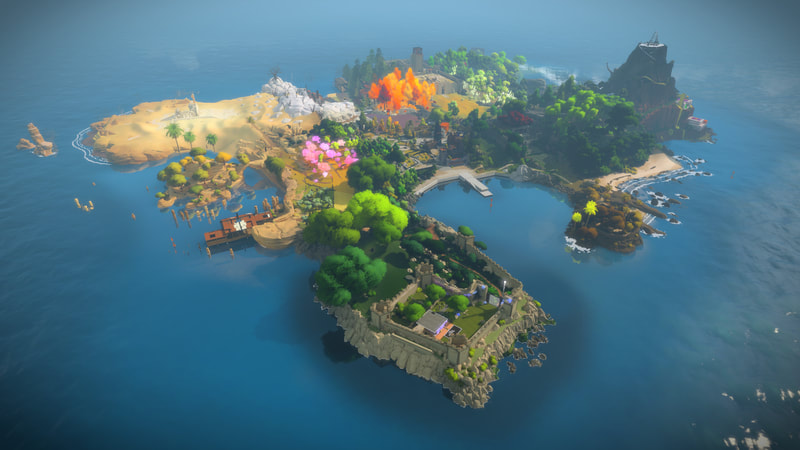
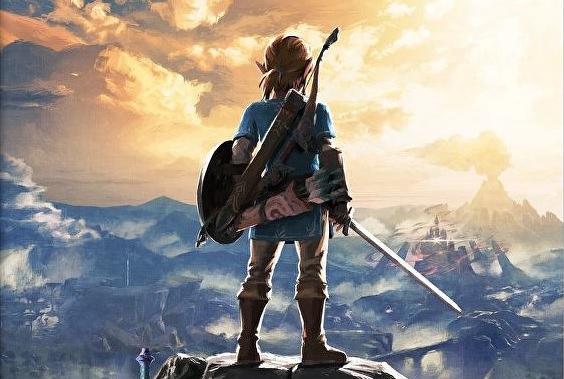
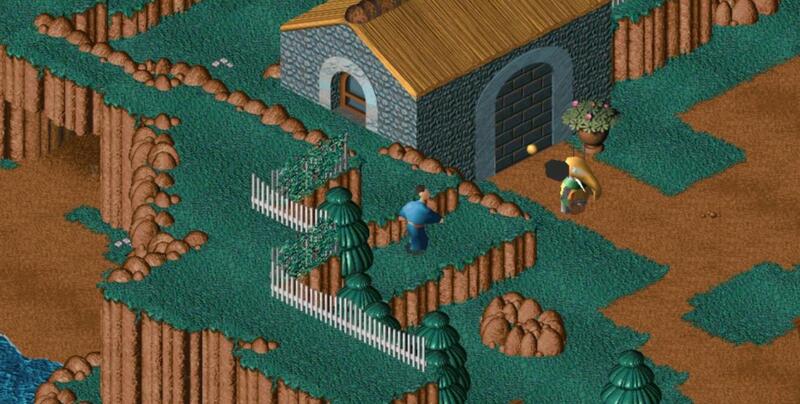
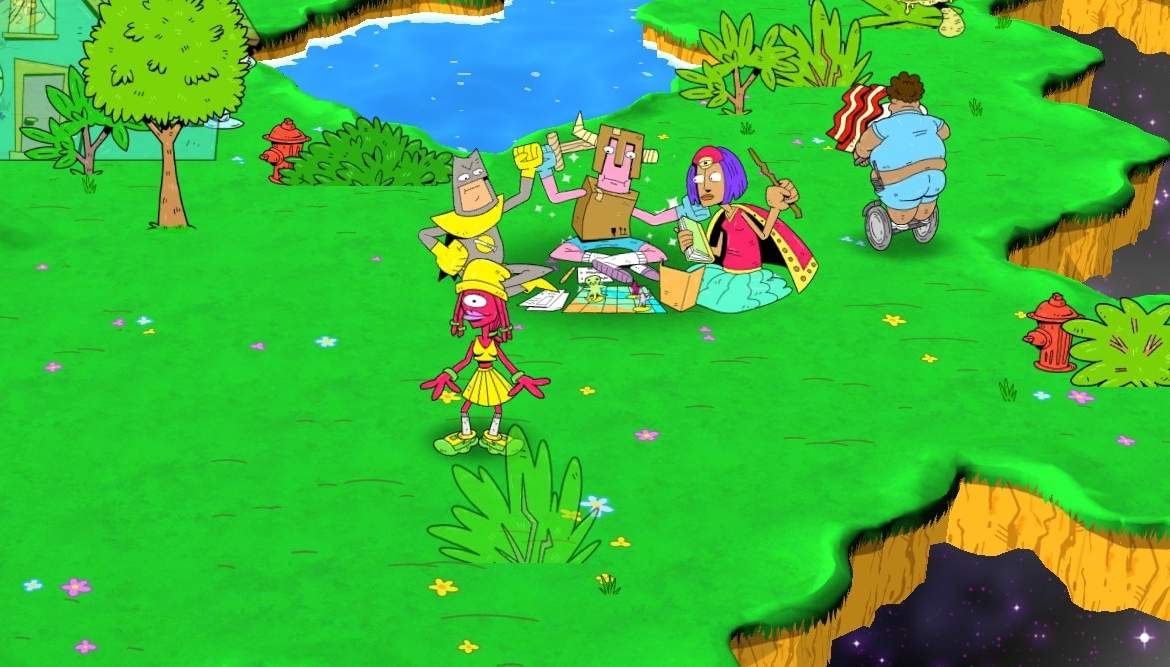

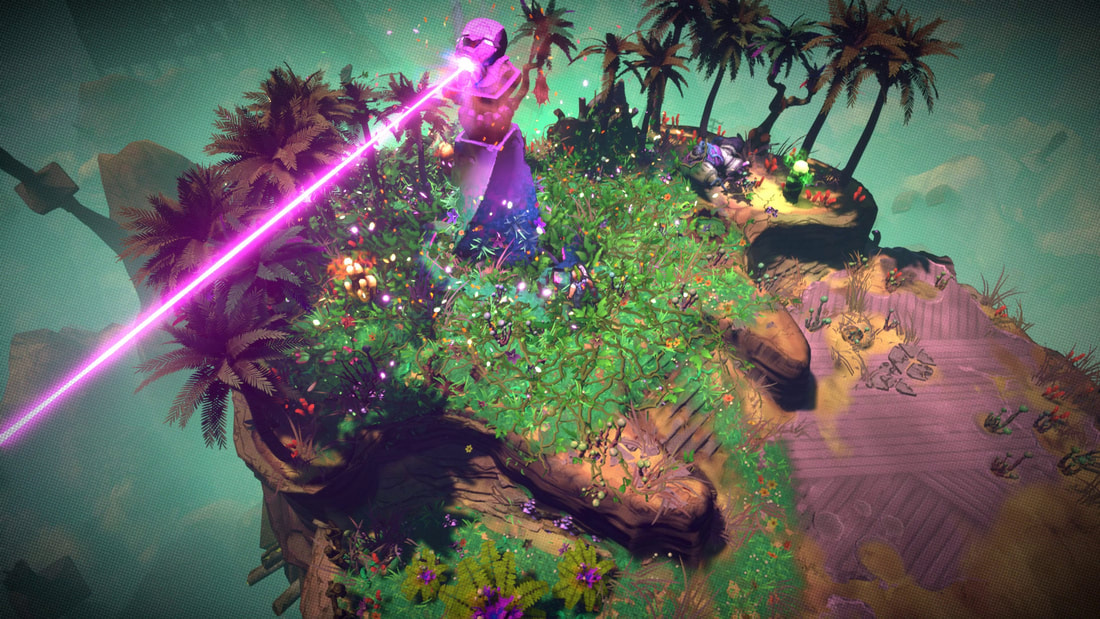
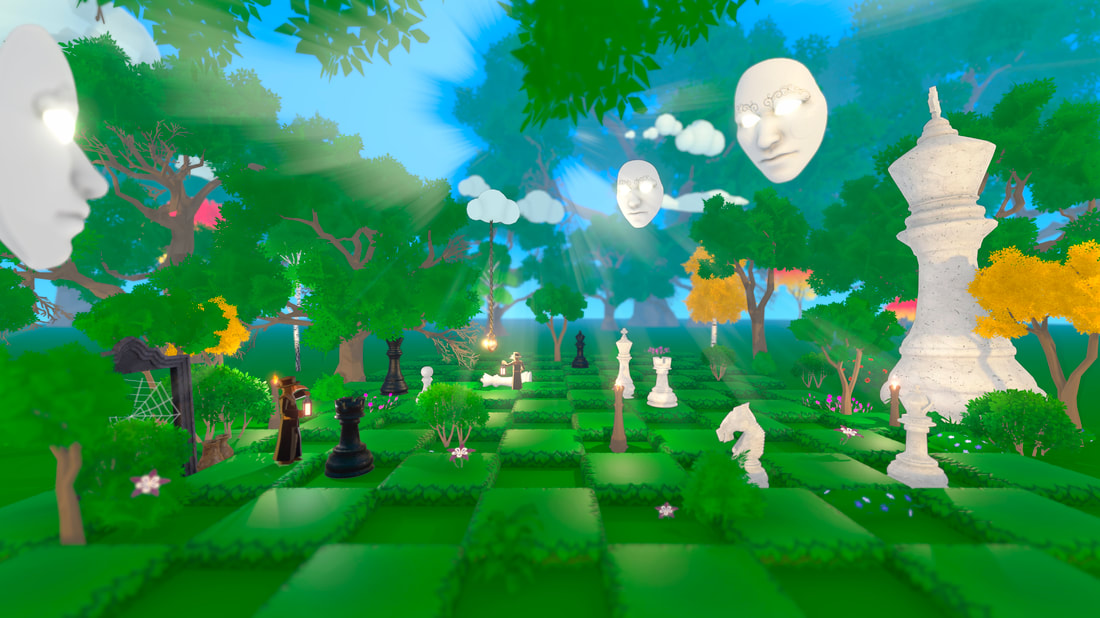
 RSS Feed
RSS Feed